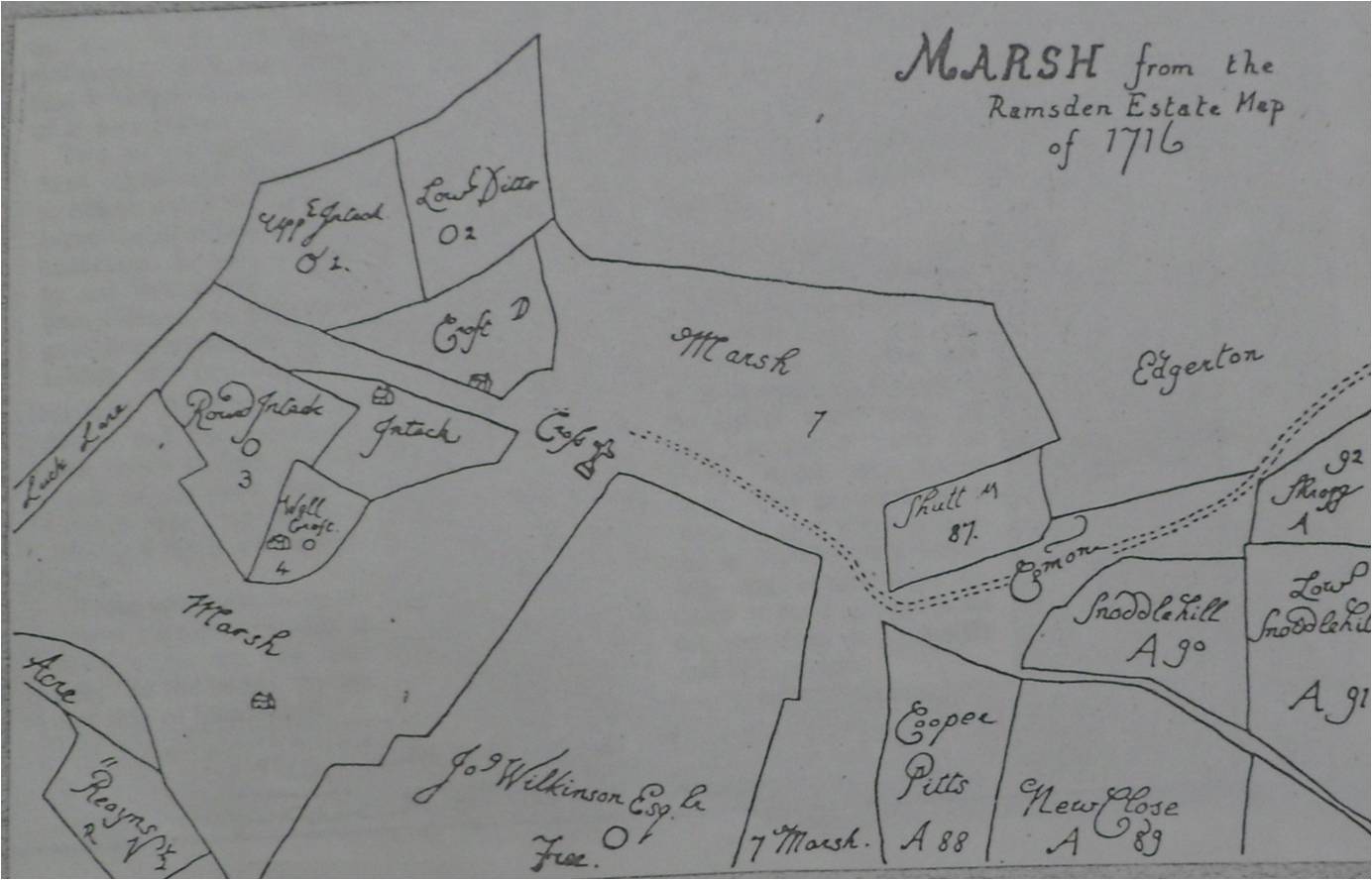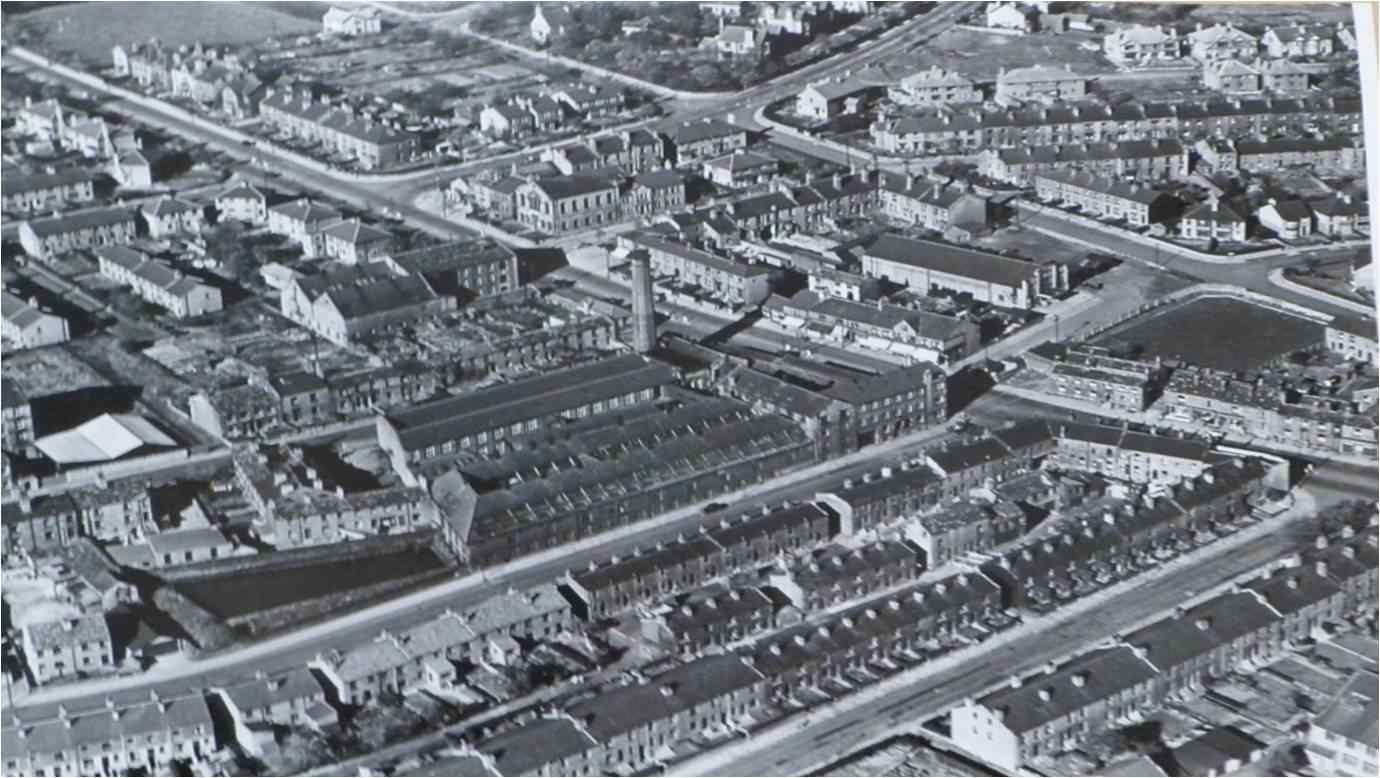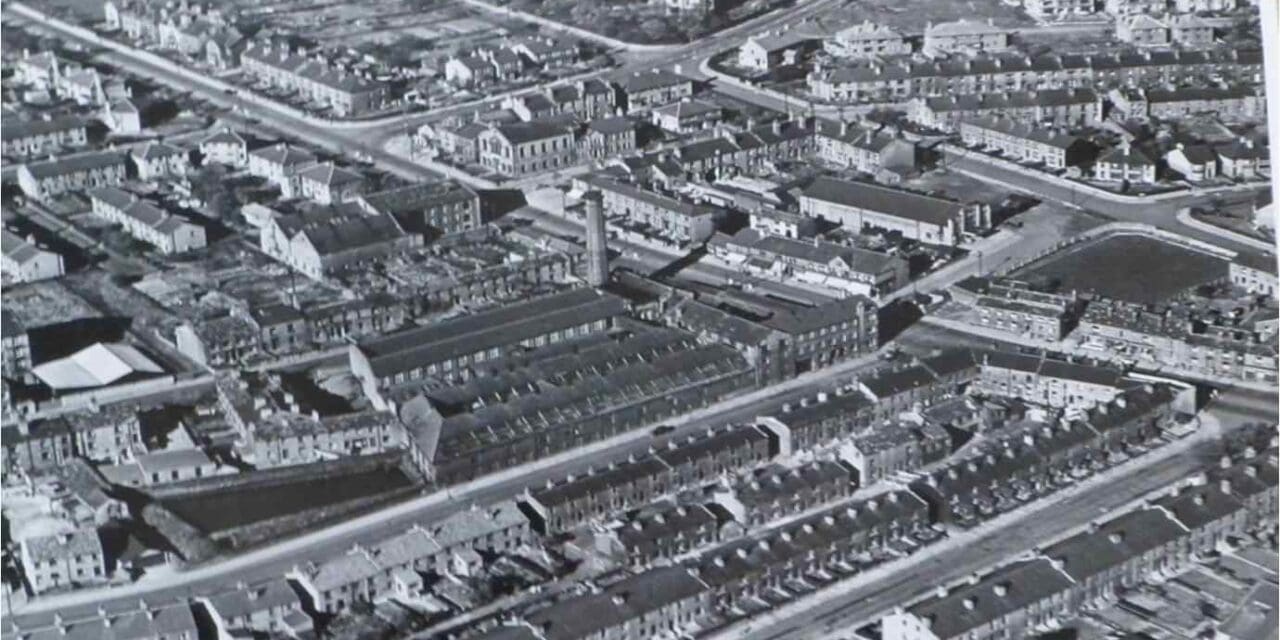By Local Historian Vincent Dorrington
From barely existing as a medieval wasteland, to developing into a thriving hamlet of the 1800s and then emerging as a vital part in Huddersfield’s industrial growth, Marsh certainly has a varied history worthy of examination.
Where does the story of Marsh all begin? A Norman knight, Sir Ilbert de Lacy, who fought for William the Conqueror at the Battle of Hastings, was rewarded with the manor of Huddersfield.
Marsh was part of that manor but it consisted of land that was beyond cultivation – no mention of it was made in the Domesday Book of 1086.
The manor of Huddersfield remained in de Lacy hands until 1322. In that year Thomas, Earl of Lancaster (who had married into the de Lacy family and held de Lacy land) revolted against King Edward II.
Thomas was beheaded at Pontefract Castle and de Lacy land was confiscated and returned to the Crown.
By 1599 an ageing and increasingly impoverished Queen Elizabeth I sold the manor of Huddersfield to William Ramsden for £695. Huddersfield and its lands, including Marsh, remained under Ramsden ownership until 1920.
The first mention of Marsh and its boundary with Huddersfield was made in 1436. By the 1580s parish records mention ‘men of Marsh’ who lived in scattered cottages across the common/marsh land – so some settlement had begun by then.
Another clue to the early settlement of Marsh is the Saxon word ‘royd’ – meaning a clearing in the woods.
This word regularly appears in early maps for the wooded area around Reinwood – Mount Royd is a good example. In all likelihood the Marsh area leading to Paddock was heavily wooded and first began to be cleared in medieval times.

From the early 1600s, the Ramsdens saw the potential of Marsh and sought to make a profit from it. Settlements began to grow in the area, so much so, that Marsh people began to have a sense of their own identity, quite separate from Huddersfield.
By the mid-1600s Marsh had grown so much that it was given its own special hamlet status. Evidence of this can be found in 1657 when the residents of Marsh, and not Huddersfield, were held to be responsible for the maintenance of their own roads.
It is likely that the settlements of Gledholt and Edgerton were older settlements than Marsh, but in the 1600s they were incorporated into the new township of Marsh as they encroached onto the common there.
The growing importance of Marsh was clear by 1690 when it became one of the five townships that made up the manor of Huddersfield – the other four were Town, Bradley, Deighton and Fartown.
The historian George Redmonds has identified some of the oldest Marsh names of people who began to farm there in the 1600s names like: Batley, Blacker, Brook, Gledhill, Hirst, France and Heaton. Many of these, like the Blackers, started life as yeomen farmers.
A study of old maps casts light on the development of Marsh. The earliest of these maps come from 1716 and belongs to the Ramsden estate. By this time there were signs of scattered homesteads as some of Marsh common had come under enclosure.
At the centre of Marsh (on the 1716 map) stands a tall cross by the side of a highway – the Marsh Cross.
At that time the appropriately named area (Marsh) was a sparsely populated tract of wasteland and common with few, if any, identifiable landmarks. The cross was most likely a waymark.
In the days when roads were little more than rough, wandering track ways, such a waymark would be visible in thick snow and discernible in mist and heavy rain. This would be a welcome guide and assurance to travellers.
The cross stood at the junction of Eldon Road (originally called Cross Lane) and Westbourne Road.
Some of the oldest roads in Marsh are Westbourne Road, Eldon Road and Luck Lane. Near Eldon Road, a few of the oldest surviving houses can be found. These are Shakespeare Gardens, but they were first called Newhousing Fold and were originally built soon after 1716.
In the mid-1850s they were renamed Shakespeare Cottages and they can be clearly seen in the first ‘detailed’ map of Marsh from 1848.


People lived there in the 1740s but in all probability they lived there before, since the Heatons lived in that area from the 1590s.
From the 1800s, like most townships of Huddersfield, Marsh began to emerge as the area it is today.
The New Hey turnpike ignored the old indirect approach to Outlane through Lindley in favour of a new straight route through to Salendine Nook. Undoubtedly, the building of this turnpike – in the early 1800s – transformed Marsh.
Two toll point chains, one at Blacker Lane and the other at Gledholt Lane, were built to monitor traffic. As a result, Marsh became a natural stopping point for travellers – Westbourne Road benefitted in particular.
New Hey Road, running between Marsh and Oakes, continued to be a problem at first. In 1820 Commissioners found that the authorities in Marsh had not adequately been repairing its roads.
This failure to maintain New Hey Road led to the turnpike being described as a swamp. Once Marsh became part of Huddersfield Council in 1868 things greatly improved.
Further developments benefitted Marsh in the late 1800s. This was a time when Huddersfield ran the first municipal transport service in Britain.
Trams (steam and then electric) ran from Huddersfield Market Place to Marsh via Lindley. Trolley buses in the early 1900s took over the routes, linking Marsh to other nearby townships.
Land between the A640 (New Hey Road) and Halifax Road (A629) where the two turnpikes ran became very desirable.
Mill owners, cloth merchants, businessmen and professionals flocked to Edgerton, Greenhead and Marsh. Aquilla Thomas Rushworth, who owned Huddersfield’s premier department store, Rushworths, was just one of many.
Even the old great houses of Marsh, like Marsh House and Croft House were no match for some of the newer late Victorian builds.
And yet, many a resident of modern day Marsh would be surprised by Ordnance Survey maps of the 1890s. Fine estates and houses could be found on either side of Westbourne Road leading up to the Bay Horse roundabout.


The first half of the 19th century, saw only one mill in the township – Luck Lane End Mill. Most woollen cloth production mainly took place in cottages, surrounded by tenter fields.
Things changed with the improved road network, they acted as a major boon for the mills of Marsh. These woollen mills (Marsh Mill – 1840s, Providence Mill – 1857, Hollins Mill – 1860s and Stanley Mill – 1880s) were built just off the New Hey Road turnpike.
A Rope Walk plant was built amongst the mills of Marsh – the perfect location. It supplied the ropes to meet the needs of many local mills.
This was a time when rope drives were a common method of power and transmission in mills and factories – especially when they were powered by central steam engines.
By the end of the 1800s Marsh could stand with Paddock, Oakes and Lindley as an industrial hub.
The 1800s had been good for Marsh and by the end of the century the suburb of Huddersfield began to reflect this.
Fine estate homes of mill owners and businessmen could be found, not only in Edgerton, but also off both sides of New Hey Road. Shops flourished also – perhaps the coming of the Co-op in 1877 was a fitting tribute to the commercial success of Marsh.
The drinking establishments of Marsh were well known, especially The Marsh House Inn, The Junction and The Croppers Inn.
Oldest of all, but no longer a pub, was The Marsh House Inn which can be seen in a map from 1848. The Junction opened in 1881 and was perfectly located being so near to the toll chain bar. The Croppers Inn was also perfectly located in the centre of Marsh. It opened in the mid-1830s.
There have been many famous figures associated with Marsh over the years. Croft House on Croft House Lane was the home of Hollywood film star James Mason.
But arguably Harold Wilson, Labour Prime Minister of the 1960s and 1970s, was the most influential figure from Marsh. Though born in Cowlersley, he was educated at Royds Hall School, just off Luck Lane in Marsh.
In 1915 the Crosland family sold Royds Hall, also known as Royds Wood, to Huddersfield Corporation for £17,000. The Hall served as a military hospital during and after the First World War. Most of its 600 beds were kept in wooden huts in its grounds.
By the end of the war more than 17,000 casualties had been treated there. This war hospital went on to have the best recovery record of any war hospital in the country.
The horrors of war hardly touched Marsh again, but incendiary bombs were dropped by the Luftwaffe, onto the same mansion when it was a school in 1940 – fortunately the roof fire was quickly put out.
Today Marsh is still centred on the busy A640 Westbourne Road leading to the M62 motorway. It has one of the busiest local shopping areas outside Huddersfield town centre, serving a population of around 4,500 people.
Marsh has come a long way from being a tiny rural hamlet. Its history reflects a resilient community that has played a full part in the economic rise of Huddersfield.
Vincent Dorrington will be giving a talk on the History of Marsh on Wednesday July 24 at 7.30 pm at Mount Methodist Church, Moorlands Road, Mount, HD3 3UQ. Entry £2.

















